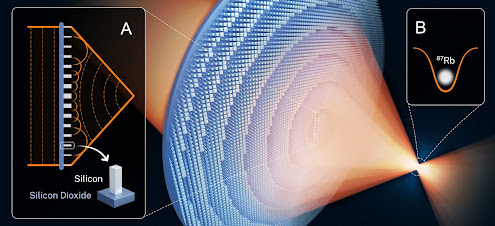 |
| In their experiments, the researchers stacked monolayer WTe2 with Cr2Ge2Te6, or CGT. Credit: Shi lab/UC Riverside |
A research team led by a physicist at the University of California, Riverside, has demonstrated a new magnetized state in a monolayer of tungsten ditelluride, or WTe2, a new quantum material. Called a magnetized or ferromagnetic quantum spin Hall insulator, this material of one-atom thickness has an insulating interior but a conducting edge, which has important implications for controlling electron flow in nanodevices.
In a typical conductor, electrical current flows evenly everywhere. Insulators, on the other hand, do not readily conduct electricity. Ordinarily, monolayer WTe2 is a special insulator with a conducting edge; magnetizing bestows upon it more unusual properties.
“We stacked monolayer WTe2 with an insulating ferromagnet of several atomic layer thickness — of Cr2Ge2Te6, or simply CGT — and found that the WTe2 had developed ferromagnetism with a conducting edge,” said Jing Shi, a distinguished professor of physics and astronomy at UCR, who led the study. “The edge flow of the electrons is unidirectional and can be made to switch directions with the use of an external magnetic field.”
Shi explained that when only the edge conducts electricity, the size of the interior of the material is inconsequential, allowing electronic devices that use such materials to be made smaller — indeed, nearly as small as the conducting edge. Because devices using this material would consume less power and dissipate less energy, they could be made more energy efficient. Batteries using this technology, for example, would last longer.
















.jpg)

.jpg)



.jpg)

